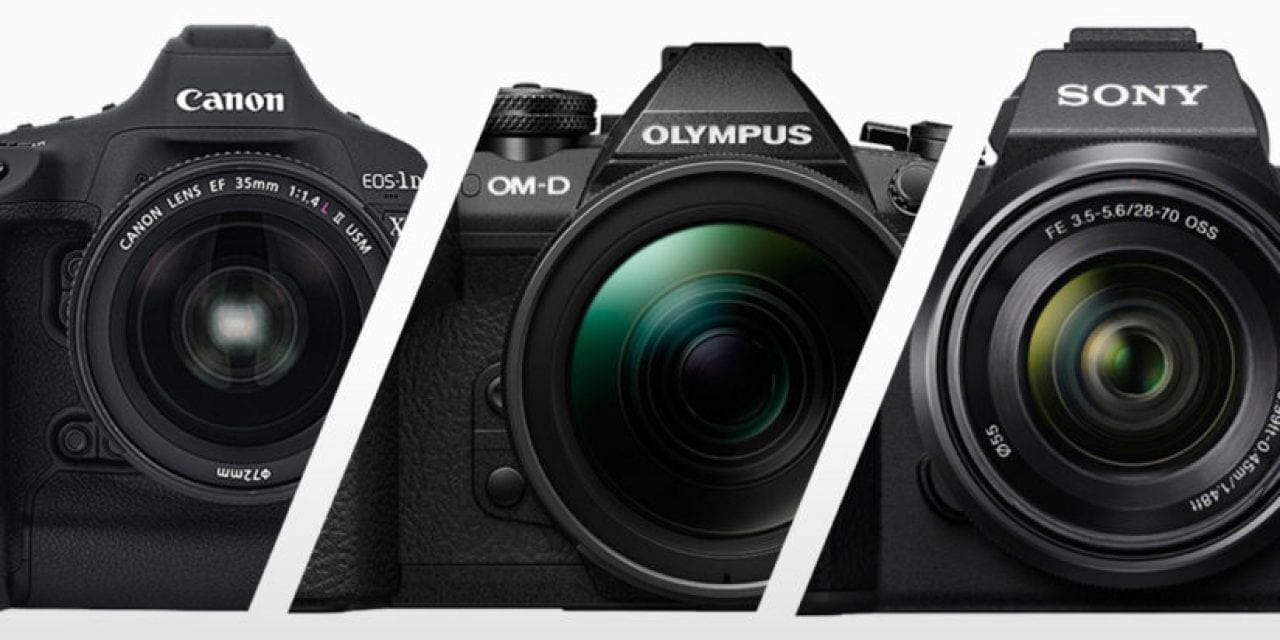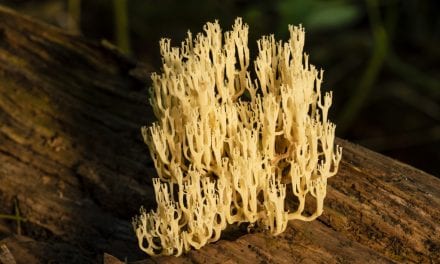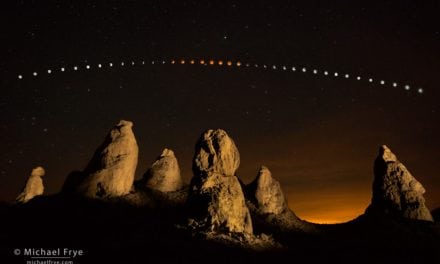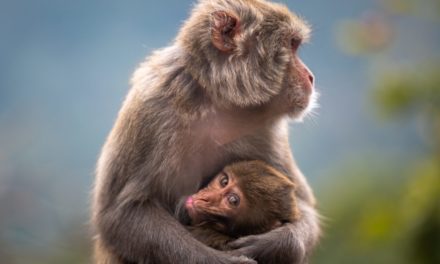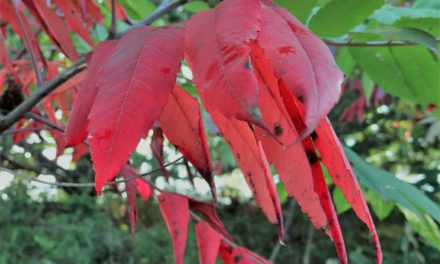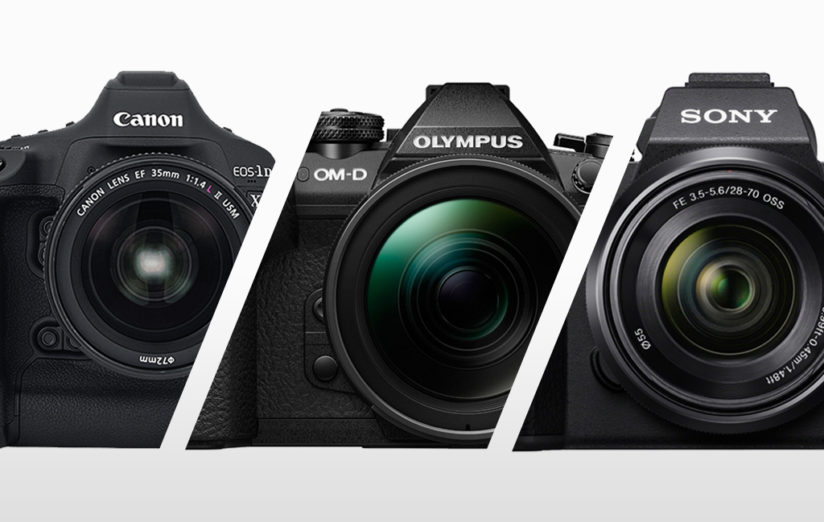
Until recently, only DSLRs had the autofocus speed, continuous shooting rates and lens selection for serious wildlife photography. Today, a few mirrorless cameras have essentially closed the gap, with cameras like Sony’s a9 offering faster-than-DSLR speed capture rates, plus totally silent operation, a decided advantage when you’re trying not to disturb your subject. And while professional super-tele primes (500mm and 600mm) are still the domain of Canon and Nikon, the forthcoming Sony 400mm ƒ/2.8 prime expected later this year indicates that as mirrorless systems mature, the array of lens options available for them will continue to expand.
That said, depending on your photographic style, the end use of your images and your budget for equipment, there are many terrific cameras—both DSLR and mirrorless—that are up to the challenge of wildlife photography.
Cameras For Wildlife Photography: Full Frame, APS or Micro Four Thirds?
Telephoto lenses are one of the most important requirements for wildlife photography, bringing you close-up views of your subjects while allowing you to remain at a safe and respectful distance. Though larger full-frame sensors are in some respects superior to APS-C sensors, the magnification factor of a smaller sensor enhances the telephoto reach of your lenses. For example, comparing a 20-megapixel full-frame camera with a 20-megapixel APS-C camera, the APS-C model will give you approximately 1.5x magnification of your lens’ focal length, making a 400mm lens equivalent to a 600mm lens. Keep in mind that this is only true if you’re comparing two cameras with the same resolution, as a full-frame image from a higher-resolution camera can be cropped for a similar result.
Learn more about working with extreme telephoto lenses for wildlife photography.
Micro Four Thirds cameras offer even greater magnification of 2x. This allows Olympus and Panasonic to design lighter, more compact telephoto lenses for their Micro Four Thirds cameras compared to zooms and primes with equivalent focal lengths for larger-sensor cameras. For example, the Olympus M.ZUIKO ED 300MM F4.0 IS PRO is equivalent to a 600mm prime on a full-frame camera—but at 3.7 inches in diameter, 8.9 inches in length and 2.8 pounds, this lens is just a little over half the size and more than 60 percent lighter than the AF-S NIKKOR 600mm f/4E FL ED VR (6.5-inch diameter, 17 inches in length and 8.4 pounds). The Olympus lens is also approximately one-fifth of the price at $2,499 versus the Nikon at $12,299. While the two lenses aren’t directly optically comparable—the professional primes from Nikon and Canon are superior in many respects—the point is that smaller-sensor cameras do offer an advantage of lighter, more compact lenses, and for many photographers, any trade off in overall image quality is negligible compared to the affordability and portability benefits of these systems.
Read a pro’s perspective on the advantages of Micro Four Thirds for wildlife photography.
Autofocus Performance
For wildlife action, AF speed and accuracy are prime considerations. Definitive numerical ratings aren’t available for AF performance, but higher-end cameras typically deliver better AF performance than entry-level bodies, and newer models with the most up-to-date AF technology improve upon earlier models.
More AF points are potentially an advantage, but evaluate the entire AF system. Cross-type points provide additional information to the AF processor and, therefore, improved accuracy. Algorithms and processor capabilities also play a major role—newer AF systems with fewer AF points and more powerful processors will potentially outperform older systems with more AF points. Multi-point AF is most useful when your subject is in front of a relatively uncluttered background. Otherwise, it may be more effective to simply use the center AF point, lock focus and then compose, or for stationary wildlife, to activate the AF point over the animal’s eye that’s nearest to the camera.
While cameras with focus-tracking capabilities can greatly enhance your chances of success, they’re not infallible, so it’s good to be able to fall back to basic technique and an understanding of your camera’s available settings. Review your manual’s recommendations for AF mode selection and experiment with your camera’s AF options to see which work best for your style of shooting.
Your lens also has a significant impact on autofocus performance. The availability and number of cross-type AF points may be limited by your lens selection. Professional super-telephoto lenses have faster motors and smarter AF algorithms, as well as finer optics than lower-end lenses. They’re more durable, with better sealing against weather and dust. They also cost a lot more, and are much larger and heavier—but that’s the price of superior performance.
Did you know your camera’s AF system operates with the lens wide open at its maximum aperture? When you activate the shutter, the lens then closes down to your selected aperture immediately before the shutter opens. Most AF systems require a minimum aperture of ƒ/5.6, which usually isn’t a problem. However, if you use a teleconverter to extend your focal length, you’re also reducing the effective maximum aperture of your lens—the stronger the teleconverter’s strength, the greater this reduction—making an AF system that’s compatible with apertures as small as ƒ/8 preferable for telephoto work.
Frames Per Second & Max Burst
While fast continuous capture rates aren’t absolutely critical for most wildlife photography, they’re certainly beneficial. More frames per second increase your chances of recording the perfect expression, gesture or wing position for moving wildlife. In addition to frames per second, the number of frames that can be stored in a single burst is also important. The larger the file, the faster your camera’s buffer will fill, so if large bursts of images are desired, shoot JPEG instead of RAW, as you’ll be able to capture significantly more images per burst. Regardless of your selected file type, to take full advantage of your camera’s speed, use the fastest-rated memory cards that your camera supports.
ISO Equivalence
For best image quality, it’s always preferable to set lower ISOs, but wildlife photography often means shooting in low-light conditions near dawn and dusk when higher ISOs are needed. Considering the minimum aperture requirements of AF systems, plus the creative flexibility of selecting the right aperture for your desired depth of field, cameras that offer wider ISO ranges provide a significant advantage for wildlife photography. Though noise increases at higher ISOs, it’s better to compromise with noise than with sharpness or not getting the shot at all.
More light translates to less noise, and larger sensors collect more light due to their increased surface area. That’s one reason why full-frame cameras are able to offer comparably higher ISO equivalents and provide better image quality at higher ISO settings than smaller sensors.
Suggested Cameras For Wildlife Photography
Following is a selection of DSLRs and mirrorless cameras which we recommend for wildlife photography. While not a definitive list, these models are excellent options from their respective makers. When selecting a camera, also consider the telephoto lenses and teleconverters available for the models you’re evaluating.

Canon EOS-1D X Mark II
Canon’s top professional DSLR, introduced in 2016, is arguably the best camera for wildlife photography, taking into account its speed and the lens options in the Canon system, including super-tele primes and teleconverters. It’s the fastest DSLR currently available, with 14 fps capture using the optical viewfinder or up to 16 fps when shooting in Live View. The AF system is also impressive, with 61 AF points, 41 of which are cross-type and compatible with apertures as small as ƒ/8. It’s no wonder why so many pro wildlife photographers shoot with this camera, but the price is steep for the more casual shooter. For more on this camera, read “Tech Tips” columnist George Lepp’s field test with the EOS-1D X Mark II.
| Canon EOS-1D X Mark II | |
| Sensor | 20.2 MP Full-Frame |
| AF Points | 61 |
| Max Frame Rate | 16 fps |
| Max Burst | 170 RAW |
| ISO Range (Expanded) | 100–51,200 (409,600) |
| Price | $5,999 |
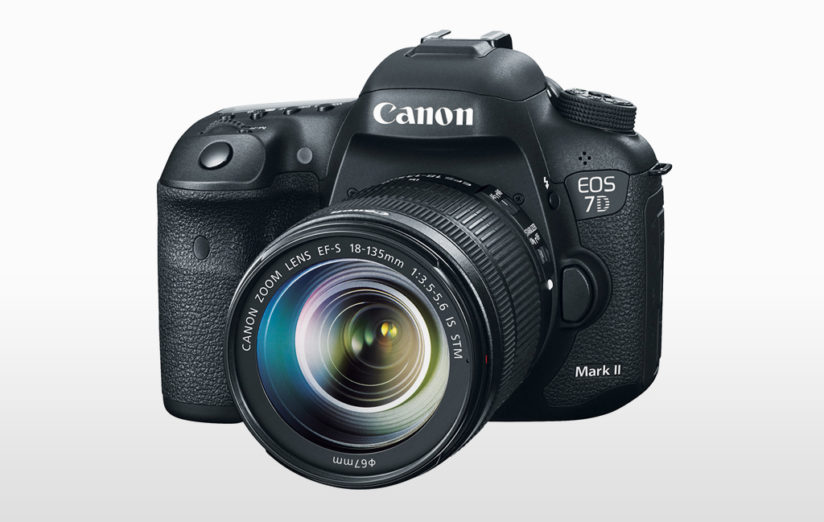
Canon EOS 7D Mark II
The top APS-C option from Canon, this DSLR features a 65-point, all cross-type AF system (with compatible lenses) for tracking fast-moving subjects. The center point of the AF system works with apertures of ƒ/8 or larger, allowing AF compatibility when using tele-extenders. Like the EOS-1D X Mark II, the AF system can function in low-light situations down to -3 EV, which is approximately the luminance of moonlight, helpful when shooting in early morning and evening light when wildlife tend to be most active.
| Canon EOS 7D Mark II | |
| Sensor | 20.2 MP APS-C |
| AF Points | 65 |
| Max Frame Rate | 10 fps |
| Max Burst | 31 RAW |
| ISO Range (Expanded) | 100–16,000 (51,200) |
| Price | $1,799 |
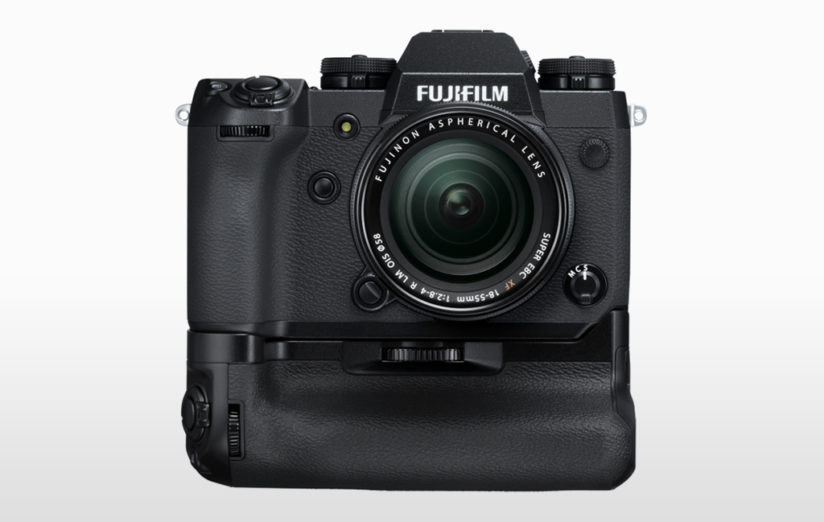
Fujifilm X-H1
New this year is the first Fujifilm X Series model that’s fast enough to make our list of cameras for wildlife photography. The Fujfilm X-H1 can shoot at speeds up to 14 fps with its electronic shutter, or 8 fps with its mechanical shutter. The latter can be increased to 11 fps when using the optional Vertical Power Booster Grip VPB-XH1, which also extends shooting time to about 900 still frames. The 24.3-megapixel APS-C mirrorless model is the first in the X Series to include in-body image stabilization, providing up to 5.5 stops of 5-axis correction with all Fujinon XF and XC lenses. The camera’s AF system is designed for low-light performance and is compatible with apertures as small as ƒ/11. This is great news for wildlife photographers, as it means you can use the Fujinon XF100-400mmF4.5-5.6 R LM OIS WR with the Fujinon 2x Teleconverter XF2X TC WR for a 35mm-equivalent range of 304-1218mm without sacrificing autofocus.
| Fujifilm X-H1 | |
| Sensor | 24.3 MP APS-C |
| AF Points | 325 |
| Max Frame Rate | 14 fps |
| Max Burst | 27 RAW |
| ISO Range (Expanded) | 100-12,800 (51,200) |
| Price | $1,899 |
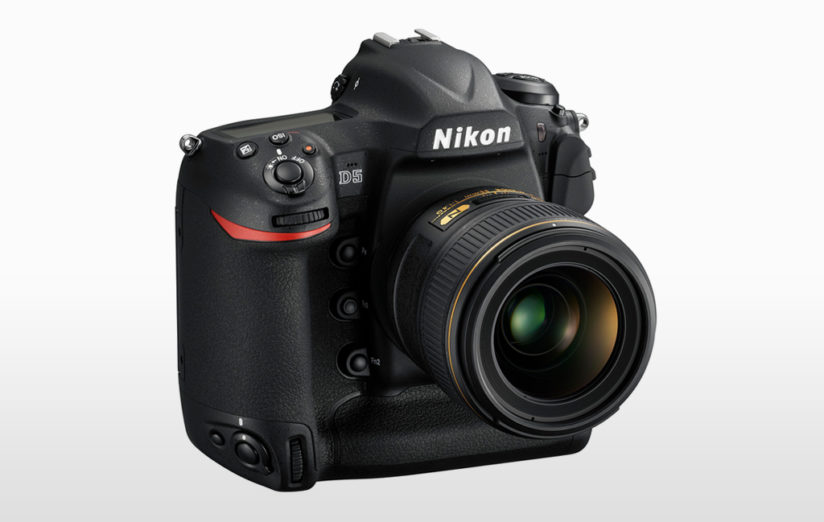
Nikon D5
Nikon’s flagship is ideal for wildlife, promising extremely fast and precise AF, with 153 AF points, 99 of which are cross-type, and 15 that can function at apertures as small as ƒ/8. The AF system also features a dedicated processor, and works in extremely low-light conditions, down to -4 EV. It can capture 12 fps using the viewfinder or 14 fps with the mirror locked up. It also offers an astounding ISO range, expandable up to 3,280,000. While images taken at that extreme will be very noisy, it’s an indication of the sensor’s excellent ability to collect light in dimmer conditions at the ends of the day. Nikon’s system includes a robust range of premium telephoto lenses and teleconverters, making this camera another top choice of wildlife photography pros.
| Nikon D5 | |
| Sensor | 20.8 MP Full-Frame |
| AF Points | 153 |
| Max Frame Rate | 14 fps |
| Max Burst | 200 RAW |
| ISO Range (Expanded) | 100–102,400 (3,280,000) |
| Price | $6,499 |
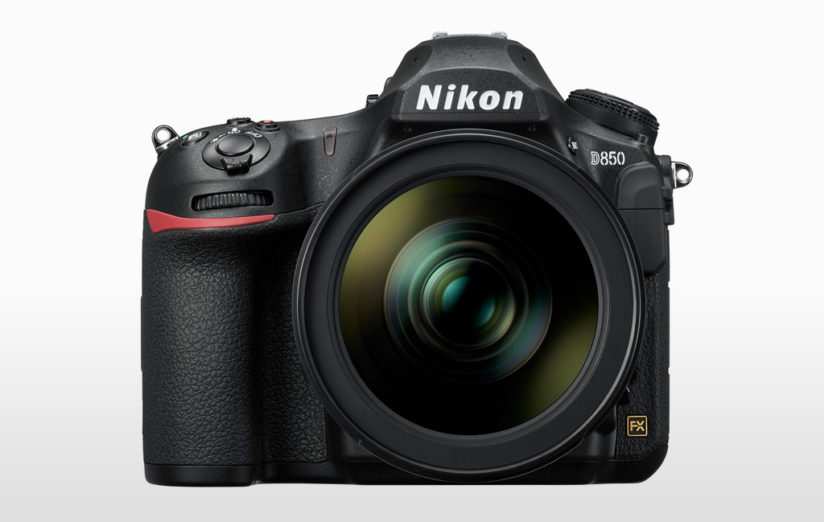
Nikon D850
Introduced in 2017, the D850 is one of the best DSLRs ever made and an excellent choice for wildlife work. It offers massive 45.7 MP stills and can capture 7 fps at that full resolution, or up to 9 fps with the optional MB-D18 Multi Power Battery Pack. Like the D5, the D850 includes Nikon’s 153-point, Multi-Cam 20K AF system, which features 99 cross type sensors, 15 of which are sensitive to ƒ/8. Of particular interest to wildlife photographers, the D850 offers a silent shooting mode when using its electronic shutter, with frame rates up to 6 fps at the camera’s full resolution with exposure and focus locked, or up to 30 fps at 8.6-megapixel resolution in DX mode. That latter option will be particularly advantageous for telephoto wildlife work because, while it does produce a lower-resolution image, it’s incredibly fast, silent and the DX mode crop means your focal length equivalent is magnified by 1.5x.
| Nikon D850 | |
| Sensor | 45.7 MP Full-Frame |
| AF Points | 153 |
| Max Frame Rate | 9 fps (full res); 30 fps (8.6 MP, DX crop) |
| Max Burst | 74 RAW |
| ISO Range (Expanded) | 64-25,600 (102,400) |
| Price | $3,299 |
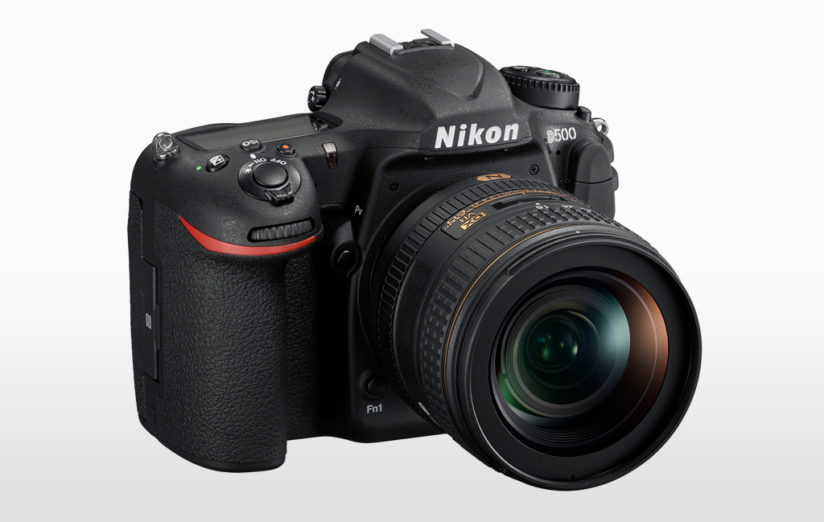
Nikon D500
The D500 includes the same AF system as the top-end pro D5, as well as its EXPEED 5 processor. Though it’s not quite as fast as the D5, it’s still very speedy at its max rate of 10 fps. It also features the same level of weather sealing as the pro model D810, and though less than the D5’s astronomical ISO max, offers a remarkable ISO range, expandable to 1,640,000.
| Nikon D500 | |
| Sensor | 20.9 MP APS-C |
| AF Points | 153 |
| Max Frame Rate | 10 fps |
| Max Burst | 79 RAW |
| ISO Range (Expanded) | 100–51,200 (1,640,000) |
| Price | $1,999 |
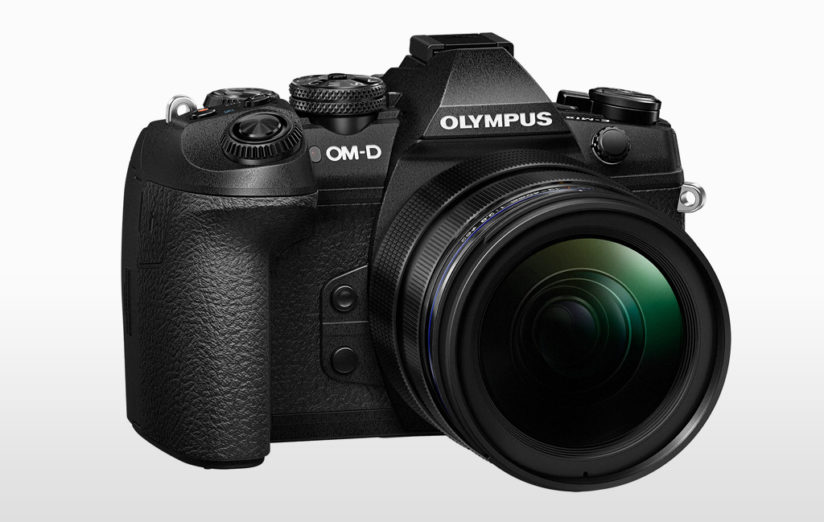
Olympus OM-D E-M1 Mark II
The top model in the Olympus OM-D Micro Four Thirds line, the OM-D E-M1 Mark II is capable of capturing up to 18 fps with continuous AF tracking using its electronic shutter, or up to 60 fps with focus locked. The AF system employs 121 all cross-type phase detection sensors, and an AF Limiter function can speed up focus acquisition with three customizable focus distance ranges when working from a consistent distance from your subject. The camera’s unique Pro Capture mode helps you record the decisive moment with wildlife action by buffering up to 35 frames when you depress the shutter release halfway, and recording an image plus those 35 previous frames when you fully depress the shutter. The E-M1 Mark II also includes 5-Axis image stabilization for shooting handheld.
| Olympus OM-D E-M1 Mark II | |
| Sensor | 20.4 MP Micro Four Thirds |
| AF Points | 121 |
| Max Frame Rate | 60 fps |
| Max Burst | 84 RAW |
| ISO Range (Expanded) | 64-6,400 (25,600) |
| Price | $1,599 |
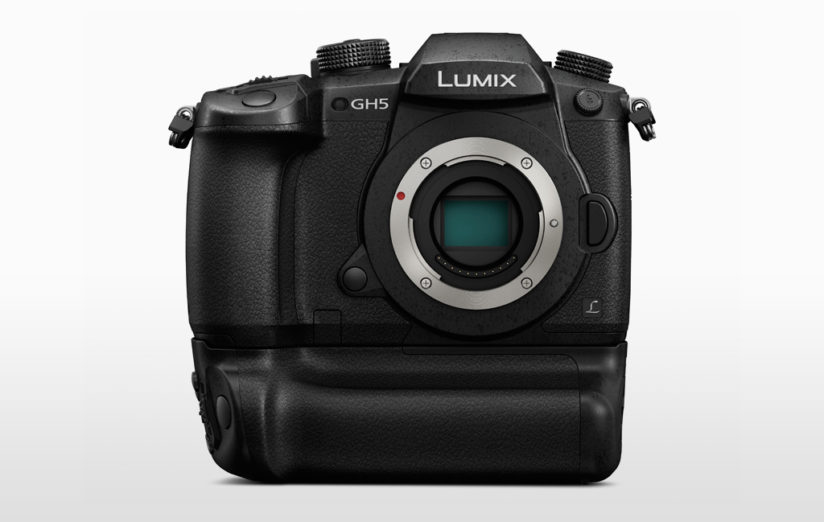
Panasonic LUMIX GH5
Another Micro Four Thirds option for wildlife work is the Panasonic LUMIX GH5. The 20.3-megapixel camera can capture full-resolution images at up to 9 fps with continuous AF using its mechanical shutter (12 fps with focus locked), but switch to the 6K PHOTO mode to record 18-megapixel images at up to 30 fps, or 8-megapixel stills at up to 60 fps in 4K PHOTO mode. Up to 5 stops of image stabilization are possible with the camera’s 5-axis Dual I.S. system. The body is built to protect against moisture and dust and can operate in temperatures as low as -10 degrees Fahrenheit.
| Panasonic LUMIX GH5 | |
| Sensor | 20.3 MP Micro Four Thirds |
| AF Points | 225 |
| Max Frame Rate | 12 fps |
| Max Burst | 60 RAW |
| ISO Range (Expanded) | 100-25,600 |
| Price | $2,599 |
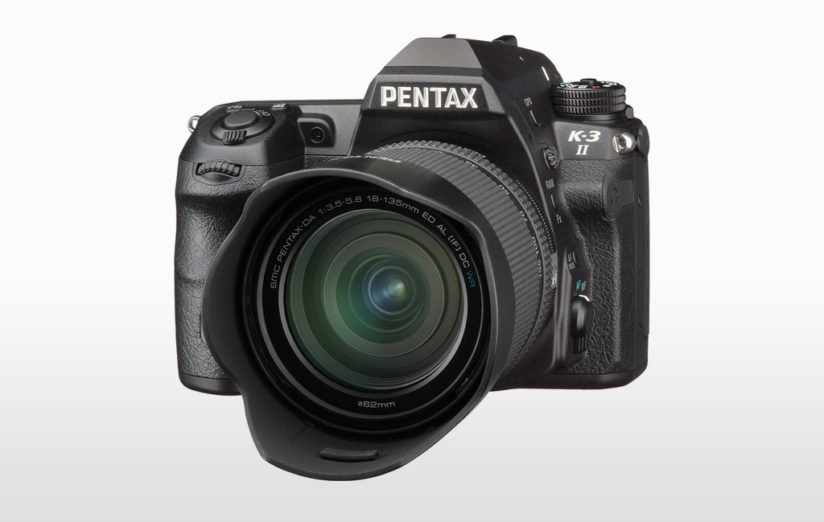
Pentax K-3 II
Like the full-frame Pentax K-1, the APS-C K-3 II is well protected against the elements, with 92 seals. It’s the camera’s speed lands it in this list—it’s roughly twice as fast as the K-1 at 8.3 fps versus the K-1’s 4.4 fps. The 27-point AF system includes 25 cross-type points and can function in low-light conditions down to -3 EV. Also like the K-1, the K-3 II has image stabilization built in, offering up to 4.5 stops of shake reduction regardless of the lens used.
| Pentax K-3 II | |
| Sensor | 24.35 MP APS-C |
| AF Points | 27 |
| Max Frame Rate | 8.3 fps |
| Max Burst | 23 RAW |
| ISO Range (Expanded) | 100–51,200 |
| Price | $999 |
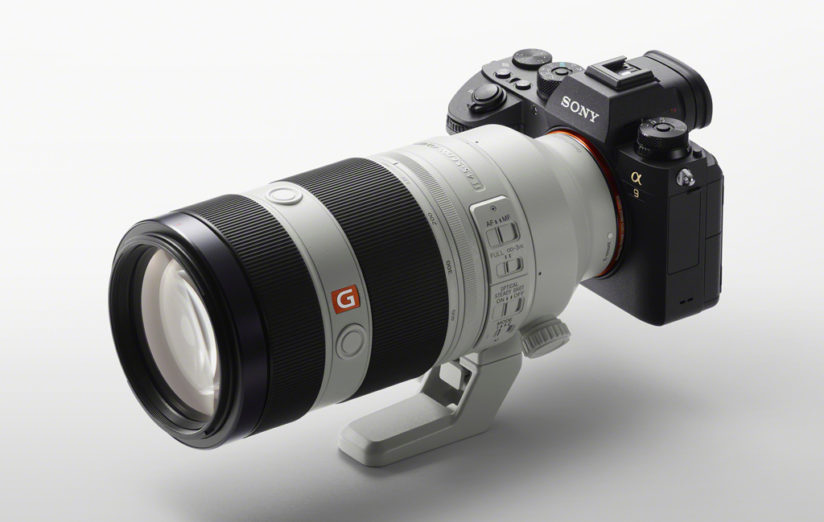
Sony a9
Sony’s full-frame mirrorless flagship features a 24.2-megapixel stacked CMOS sensor combined with a 693-point focal plane phase detection AF system, which covers approximately 93 percent of the frame. The camera is capable of making 60 AF/AE tracking calculations per second and able to shoot at 20 fps continuously for up to 241 RAW or 362 JPG images at the camera’s full resolution in a single burst. Also advantageous for wildlife photography is the camera’s silent shooting mode and a high-resolution Quad-VGA OLED Tru-Finder that’s one of the best EVFs we’ve used—and there’s no blackout during capture. The a9 has built-in 5-Axis image stabilization that provides up to 5 stops of compensation for camera movement when shooting handheld. The NP-FZ100 battery introduced with this camera provides approximately double the life of previous Sony full-frame mirrorless camera batteries, and an optional VG-C3EM Vertical Grip extends shooting time even further. For more info, read our review of the Sony a9, and “Wild By Nature” columnist Melissa Groo’s impressions.
| Sony a9 | |
| Sensor | 24.2 MP Full-Frame |
| AF Points | 693 |
| Max Frame Rate | 20 fps |
| Max Burst | 241 RAW |
| ISO Range (Expanded) | 100–51,200 (204,800) |
| Price | $3,999 |
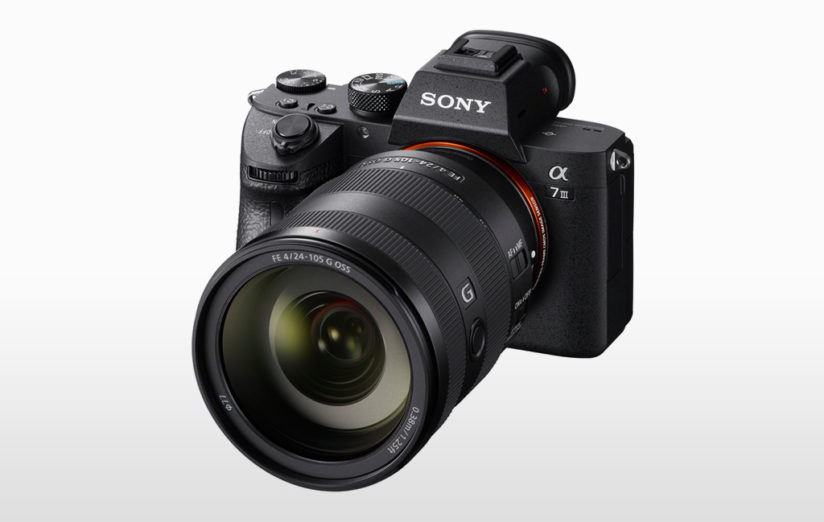
Sony a7 III
Though not as fast as the a9, the 24.2-megapixel full-frame a7 III is still quite capable for wildlife work, with a max continuous shooting rate of 10 fps in both mechanical and electronic shutter modes.The a7 III’s autofocus system has 425 contrast AF points and 693 focal-plane phase detection points that cover 93 percent of the image frame, the same system used in the Sony a9. Compared to the previous a7 II model, the a7 III is nearly twice as fast focusing in low-light and when tracking subjects. Also like the a9, the camera’s 5-Axis image stabilization system provides up to 5 stops of compensation for shooting handheld. One of the most noteworthy aspects of this camera is its price for the performance it offers, at under $2,000. Read our review of the Sony a7 III.
| Sony a7 III | |
| Sensor | 24.2 MP Full-Frame |
| AF Points | 693 |
| Max Frame Rate | 10 fps |
| Max Burst | 89 RAW |
| ISO Range (Expanded) | 100–51,200 (204,800) |
| Price | $1,999 |
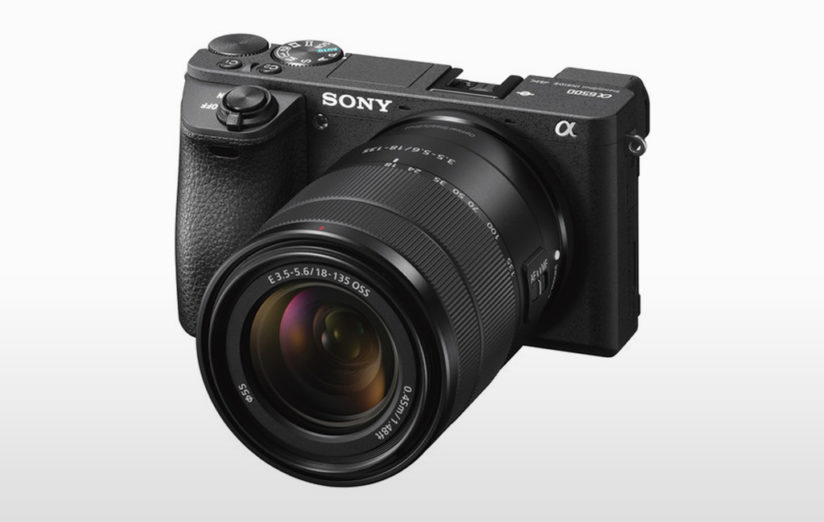
Sony a6500
Though Sony’s full-frame mirrorless cameras get most of the attention, the APS-C sensor a6500 has a lot to offer wildlife photographers. The 24.2-megapixel model can capture images at up to 11 fps and includes Sony’s Eye AF technology that’s found in its more expensive full-frame cameras to lock focus on and track your subject’s eye. Silent shooting is also possible with this camera, though it reduces the capture rate to 3 fps. In-body 5-axis image stabilization provides up to 5 stops of correction when shooting handheld.
| Sony a6500 | |
| Sensor | 24.2 MP APS-C |
| AF Points | 426 |
| Max Frame Rate | 11 fps |
| Max Burst | 107 RAW |
| ISO Range (Expanded) | 100-25,600 (51,200) |
| Price | $1,099 |
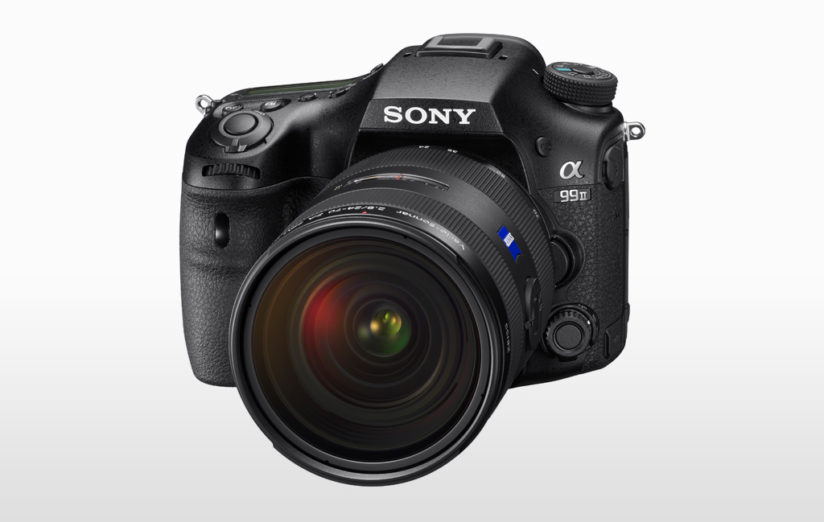
Sony a99 Mark II
With the popularity of Sony’s E-mount mirrorless cameras, we were pleasantly surprised when it updated the A-mount a99 to Mark II in late 2016. That was great news for those who had invested in A-mount lenses. Technically not a DSLR but not mirrorless either, the a99 II is built around Sony’s Translucent Mirror Technology, which passes most of the light to the image sensor, but reflects a small amount to the 79-point phase-detection AF system. In addition to that dedicated phase-detection sensor, the a99 II also has a 399-point focal plane phase detection AF sensor similar to those found in Sony’s mirrorless cameras which enables capabilities like Eye AF. At full resolution, the a99 II can capture at 12 fps with AF tracking, doubling the capture rate of the original a99. That’s impressive, because the Mark II also nearly doubles the resolution of its predecessor (42.4-megapixel versus 24.3-megapixel). Though the future of Sony’s A-mount cameras is uncertain considering the popularity and capability of its E-mount line, the a99 Mark II is a significant upgrade from previous models in this series.
| Sony a99 Mark II | |
| Sensor | 42.4 MP Full-Frame |
| AF Points | 79 / 399 |
| Max Frame Rate | 12 fps |
| Max Burst | 54 RAW |
| ISO Range (Expanded) | 100–25,600 (102,400) |
| Price | $3,199 |
Updated June 21, 2018
First published July 23, 2013
The post Best Cameras For Wildlife Photography appeared first on Outdoor Photographer.

